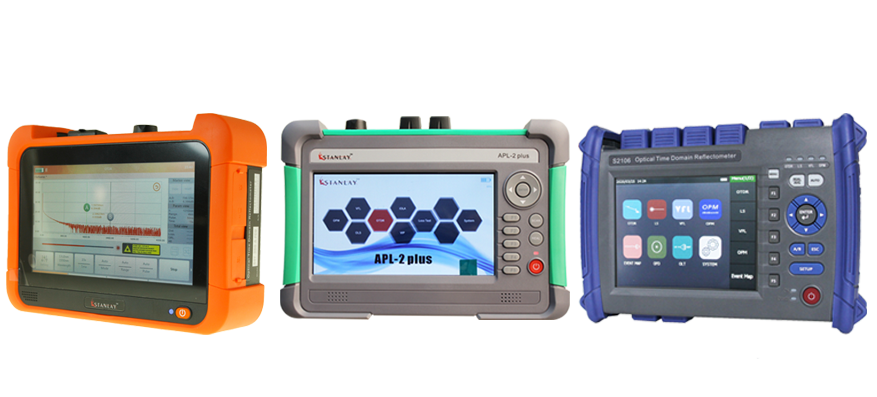How an optical measurement system enhances production accuracy
All You Required to Find Out About Robotic Vision and Its Applications in Advanced Optical Measurement Equipments
Robotic vision stands for a considerable development in the junction of computer system vision, expert system, and artificial intelligence. This innovation boosts the accuracy of optical dimension systems, making it possible for real-time data analysis and improved quality assurance. Its impact spans several sectors, from making to healthcare. However, the evolving landscape of robot vision questions regarding future abilities and applications (robotic vision). What innovations lie ahead in this transformative area?
Understanding Robotic Vision: Key Concepts and Technologies
Robotic vision encompasses the modern technologies and methods that enable makers to interpret and recognize aesthetic info from their setting. This field combines elements of computer vision, expert system, and device learning to promote automatic decision-making based upon visual data. Trick concepts consist of image processing, which includes the enhancement and analysis of pictures to remove meaningful features, and things recognition, which permits machines to identify and classify things within a scene.

The Integration of Robotic Vision With Optical Measurement Solutions
As industries increasingly demand precision and effectiveness, the combination of robotic vision with optical measurement systems has actually arised as a transformative technique. This harmony allows robotics to regard and translate their surroundings, enhancing the capacity of optical measurement systems to evaluate and analyze items with unrivaled accuracy. By gearing up optical sensing units with innovative imaging technologies, robotic vision allows real-time information collection and handling, promoting instant adjustments to measurement criteria.
Moreover, the combination equips automated systems to discover variants in measurements, surface top quality, and positioning, which are important in quality assurance procedures. Boosted formulas, such as maker understanding, additional increase this combination by improving the systems' capability to adapt to various atmospheres and circumstances. The combination not just streamlines dimension processes yet also lessens mistakes, making certain that products satisfy rigorous sector criteria, thereby strengthening the function of robotic vision in the future of optical measurement systems.
Applications of Robotic Vision in Production
In modern-day production environments, making use of vision systems has transformed manufacturing processes by enabling equipments to execute tasks with exceptional accuracy and rate. Robotic vision systems are progressively used for quality assurance, where they check products for problems and assurance adherence to specifications. These systems utilize cams and progressed formulas to examine products in real-time, significantly minimizing the danger of human error.
In addition, robotic vision facilitates automation in assembly lines, permitting robotics to properly recognize elements and assemble them with minimal downtime. This technology likewise enhances inventory administration, as vision systems can check supply degrees and detect discrepancies, assuring a seamless supply chain.
Robotic vision aids in the implementation of clever factories, where information from vision systems can be incorporated with other technologies to optimize process (optical fibre diameter analyser). On the whole, the applications of robot vision in manufacturing demonstrate its essential duty in improving performance, quality, and performance across numerous industries
Robotic Vision in Healthcare: Transforming Individual Treatment

In rehab, robotic vision aids in keeping track of patient development and customizing therapy sessions to private requirements. It supports doctor by automating jobs such as information collection and client monitoring, permitting more time to concentrate on straight client interaction. Additionally, robot vision enhances telemedicine by enabling remote diagnosis and virtual consultations, connecting the gap between patients and doctor. Overall, the application of robot vision in healthcare is transforming client treatment, bring about enhanced outcomes, performance, and client fulfillment.
Future Trends and Growths in Robotic Vision Technology
The rapid development of robotic vision innovation promises to additionally boost its applications across different markets, consisting of medical care. Future trends suggest a substantial shift in the direction of incorporating expert system and maker knowing, making it possible for systems to gain from substantial datasets and improve accuracy gradually. Boosted sensing unit modern technologies and deep knowing formulas are expected to fine-tune things recognition capabilities, enabling robotics to analyze complex atmospheres better.

Furthermore, the combination of increased reality (AR) with robot vision will likely transform exactly how robots assist in procedures and diagnostics. This synergy will help with real-time data visualization, improving decision-making processes. Furthermore, miniaturization of elements will certainly cause more portable and flexible robotic vision systems ideal for a selection of tasks. As these innovations unravel, sectors will certainly witness raised automation and performance, solidifying robot vision as a foundation of ingenious technological options.
Often Asked Concerns
What Are the Key Components of a Robotic Vision System?
The main components of a robot vision system consist of cams for photo capture, processors for information analysis, formulas for interpretation, and actuators for motion. Together, these elements enable robotics to view and communicate with their environment effectively.
How Does Robotic Vision Improve Precision in Measurements?
Robotic vision improves measurement precision by utilizing innovative imaging modern technologies, allowing exact object discovery and spatial evaluation. This capability minimizes human mistake, raises repeatability, and permits for real-time modifications, ultimately boosting general dimension integrity and efficiency.
What Industries Advantage A Lot Of From Robotic Vision Modern Technology?
Different sectors benefit significantly from robotic vision modern technology, including production, medical care, agriculture, and logistics. These fields make use of enhanced accuracy, effectiveness, and automation, causing improved imp source performance and decreased functional prices in their respective procedures.
Can Robotic Vision Systems Work in Low-Light Conditions?
Robotic vision systems can certainly function in low-light problems, making use of innovative sensing units and algorithms to enhance image clarity. This capacity enables blog them to carry out properly in various atmospheres, consisting of commercial and surveillance applications, despite very little illumination.
What Are the Expenses Connected With Executing Robotic Vision?
The prices connected with executing robotic vision vary substantially, affected by components such as electronic cameras, software program, and assimilation. Added costs consist of upkeep, training employees, and prospective upgrades to existing systems, which can collect gradually.